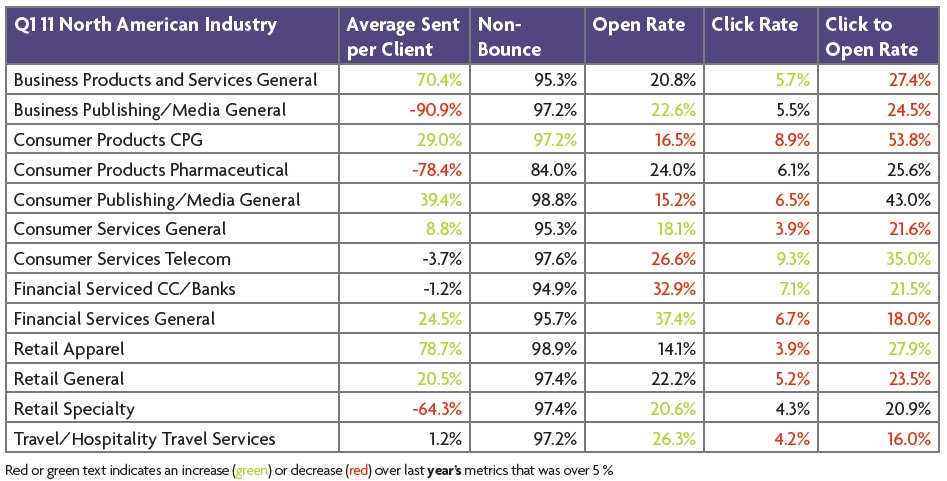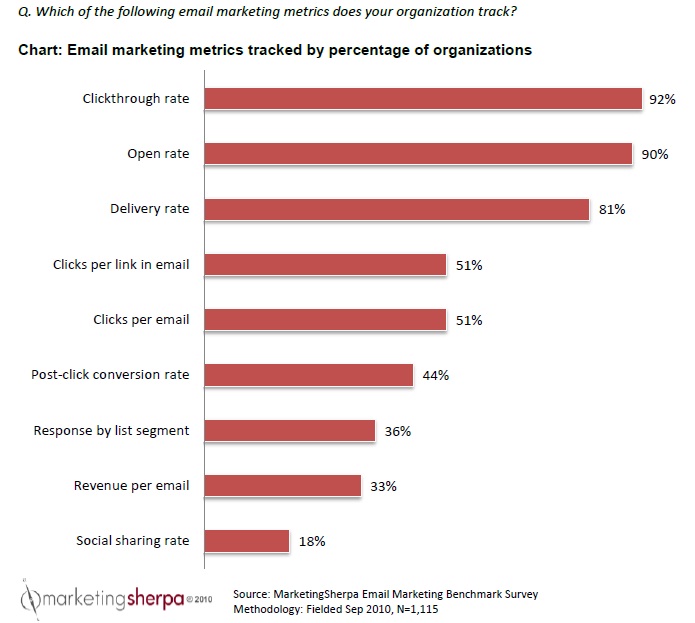Choosing your metrics is an important decision for your company to make, however you must also keep in mind that many variables come into play that may not be reflected in the figures themselves. This key point was made recently in the blog "Email Marketing Reports"., i.e. that we live in a "multichannel" world where linking the purchasing decision back to any one campaign, or campaign metric, is difficult to do.
As a rule, different email marketing metrics will apply when used to analyse campaigns deployed in different industries, different channels (B2B/B2C), and according to both company goals and the message design (newsletter, sales promotion etc.). Therefore there is no rule to say one metric is more effective than the other.
To highlight this difference, below is an example from the quarterly "email trends and benchmark" analysis carried out by the email marketing provider "Epsilon", along with the "Direct Marketing Association", on the North American market:

*, **
As you can see from the above, there is no standard pattern that applies across all industries and channels, and a lot of variables will influence the success (or failure) of the campaign itself. This is why defining a metric is very much an individual company decision. To provide some guidelines, there are a number of metrics that are used most at the early stage of email marketing adoption. The below is a list of the most popular as per Marketing Sherpa's "2011 Email Marketing Benchmark Report":

In the next post we will take a look at the top 3 — "clickthrough rate", "open rate" and "delivery rate".
*As an exercise to improve your email marketing analysis skills, look at these chart figures and draw some conclusions about each industry. What do these figures say?
**Taken from "Q12011 Email Trends and Benchmarks", Epsilon, June 2011

